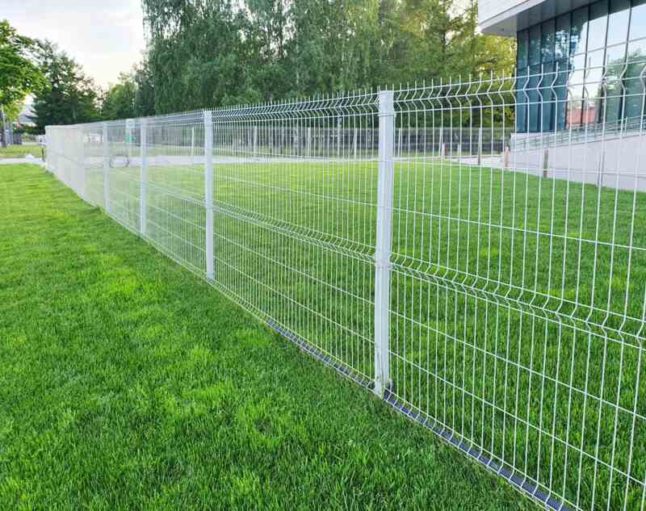All Categories
Featured

Amongst the most prominent options, wood, vinyl, and aluminum each offer unique advantages and drawbacks. Right here's a breakdown of the pros and cons of these 3 usual fencing materials.
Wood Fence. Timber fencing has actually been a timeless selection for homeowners because of its natural charm and adaptability.
Pros:. Visual Appeal: Wood provides a cozy and traditional look that enhances a selection of building designs. Customizable: It can be painted, discolored, or cut into one-of-a-kind styles to suit personal preferences. Cost-Effective: Originally, timber fencing can be a budget-friendly option contrasted to various other products. Eco-Friendly: Timber is a sustainable source and can be sustainably sourced. Disadvantages:. High Upkeep: Timber calls for normal sealing, staining, or painting to avoid rot, insect damage, and weathering. Longevity Issues: Without appropriate treatment, timber can warp, split, or degeneration with time, especially in locations with high moisture. Shorter Life expectancy: A timber fencing normally lasts 10-20 years, depending upon the sort of wood and level of maintenance. Timber is optimal for those who value a conventional appearance and agree to commit to its maintenance.
Vinyl Secure Fencing. Vinyl is a modern-day, low-maintenance secure fencing choice that has expanded in popularity in the last few years.

Pros:. Low Maintenance: Plastic does not call for paint, staining, or securing and can be quickly cleaned up with soap and water. Climate Resistant: It withstands severe weather problems without deteriorating, rusting, or warping. Durable: Vinyl fencings can last 20-30 years with marginal maintenance. Selection of Styles: Offered in several shades, designs, and structures, some vinyl choices simulate the appearance of wood. Cons:. Greater Upfront Cost: Plastic fence can be extra expensive at first compared to wood. Brittleness in Cold Weather: In severe cold, vinyl may crack or come to be fragile. Limited Repair works: Specific panels can be difficult to change, requiring mindful matching to the existing fencing. Plastic is ideal suited for house owners looking for a long lasting, low-maintenance option with contemporary aesthetic appeals.
Light Weight Aluminum Fencing. Aluminum fence is a long lasting and lightweight option, often picked for its contemporary appearance and convenience.
Pros:. Rust-Resistant: Aluminum doesn't rust, making it a superb choice for damp or damp climates. Low Maintenance: Calls for minimal maintenance and is very easy to tidy. Resilient: While lightweight, aluminum is solid sufficient to withstand lots of ecological problems. Long Life-span: Can last several years without considerable wear or deterioration. Range of Styles: Supplies a sleek and stylish look, commonly used for decorative or decorative purposes. Disadvantages:. Higher Cost: The first investment for light weight aluminum secure fencing is more than wood or plastic. Much Less Personal privacy: Light weight aluminum fencings are usually created with open pickets, making them much less reliable for personal privacy. At risk to Damages: Although sturdy, light weight aluminum can be nicked by solid influences. Light weight aluminum is excellent for those seeking a trendy, resilient option that needs minimal care.
Making the Right Selection. Each fence material-- wood, plastic, and light weight aluminum-- provides unique advantages and downsides. Your choice ought to rely on your certain top priorities, such as budget, maintenance preferences, climate, and aesthetic goals:
Choose timber if you enjoy a traditional look and do not mind normal upkeep. Choose plastic if you desire a low-maintenance, weather-resistant fence with contemporary charm. Choose aluminum if you prioritize sturdiness, rust resistance, and a streamlined style. By considering these pros and disadvantages, you can select a fencing material that enhances your property while fulfilling your useful requirements.
Latest Posts
Find Out Why Chicago Drivers Select Montclare Auto Repair for Reliable Service and Significant Savings
Published May 26, 25
1 min read
Uncover Premier Auto Repair Care offered by Montclare Auto Repair – Keep Your Car Running Smoothly
Published May 24, 25
1 min read
Discover Reduce Expenses on Car Maintenance with Montclare Auto Repair’s Limited-Time Deals
Published May 23, 25
1 min read
More
Latest Posts
Find Out Why Chicago Drivers Select Montclare Auto Repair for Reliable Service and Significant Savings
Published May 26, 25
1 min read
Uncover Premier Auto Repair Care offered by Montclare Auto Repair – Keep Your Car Running Smoothly
Published May 24, 25
1 min read
Discover Reduce Expenses on Car Maintenance with Montclare Auto Repair’s Limited-Time Deals
Published May 23, 25
1 min read